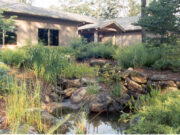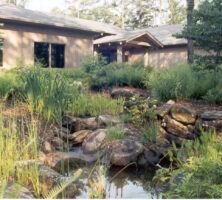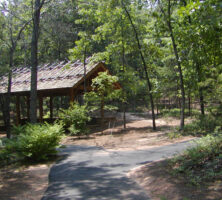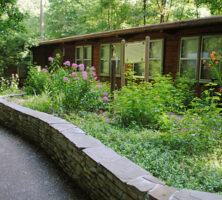Since few states in the United States are as topographically and biologically diverse as Georgia, one might conclude that environmental education has flourished here for many decades. Outdoor education programs are relative newcomers to the state’s education scene, however.
The Savannah–Chatham County Board of Education established Oatland Island Education Center in 1974. Located on a marsh island just east of Savannah, Oatland built large habitats for native wildlife and taught local students about coastal ecology. About the same time, the University of Georgia’s Marine Extension Service on Skidaway Island began to provide marine ecology programs to students of all ages.
Environmental education moved inland when the state’s first nonprofit environmental education provider, the Chattahoochee Nature Center in Roswell, was founded in 1976. In 1979 the Cooperative Extension Service started an environmental education program at its popular Rock Eagle 4-H center in Putnam County. Soon the other 4-H centers at Jekyll Island, Tybee Island, and Wahsega in Dahlonega followed suit.
At the Chattahoochee River National Recreation Area, park rangers expanded their duties to include environmental education and interpretive programs for students and the general public. Teacher training in environmental education got a boost with the opening of “Geosphere,” the Chattahoochee River Environmental Education Center, a park facility located near Roswell.
Since 1967 Fernbank Science Center, an extension of the DeKalb County School System, has offered environmental education in metropolitan Atlanta. Other centers were created and other providers stepped forward in the 1980s and early 1990s. Elachee Nature Science Center hired its first program naturalist in 1986. The Outdoor Activity Center in Atlanta’s West End and the Dunwoody Nature Center soon followed.
The Department of Natural Resources (DNR) began to allocate more and more of its time and energy to education. Its Wildlife Resources Division (WRD) traditionally served hunters and fisherman. But as these groups’ numbers began to decrease, education became a more dominant focus. The WRD built the Charlie Elliot Wildlife Center near Mansfield and acquired Smithgall Woods near Helen. Both of these facilities were designed for students, teachers, and the general public.
The WRD became the state sponsor of Project WILD, one of the country’s oldest and most popular environmental education curricula. DNR’s Environmental Protection Division, the state’s main regulatory agency, became the sponsor of two additional curriculum programs, Georgia Project WET and Georgia Adopt-a-Stream. Project WET trains teachers in water-based activities, and Adopt-a-Stream trains volunteers in stream-monitoring techniques.
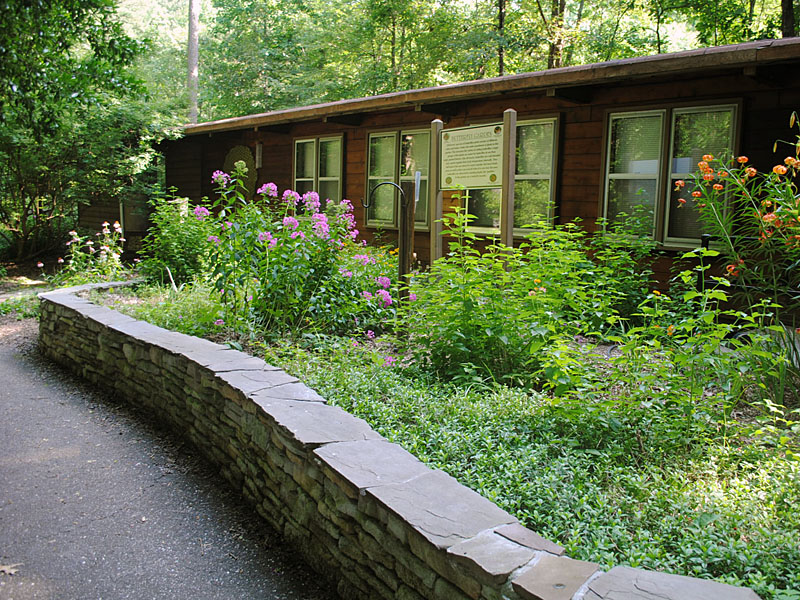
Courtesy of UGA Archway Partnership
Many of Georgia’s nonprofit outdoor organizations have shifted their focus to education. The Georgia Wildlife Federation, one of the state’s largest outdoor activity organizations, began to actively promote environmental education along with its hunting and fishing programs. Georgia’s oldest environmental advocacy group, the Georgia Conservancy, strengthened its education program for children, families, and teachers. In the mid-1990s the Upper Chattahoochee Riverkeeper in Atlanta combined advocacy and education to increase awareness of environmental issues related to the Chattahoochee River.
Today hundreds of organizations, agencies, camps, churches, and individuals provide environmental education to an increasingly interested populace. The nature imagery in the poems of William Wordsworth and Samuel Taylor Coleridge can take on new relevance and meaning when studied as part of a class on river or forest ecology. Economics gains a new dimension when students realize the economic benefits of greenspace to the community.
The future of environmental education is bright in Georgia. The state’s professional organization, the Environmental Education Alliance (EEA) of Georgia, is working on a number of initiatives to strengthen the discipline. The EEA is partnering with the University of Georgia to provide certification for environmental education professionals. The first classes were offered in July 2002.


